-------------------
To the rhythm of Prud'hon's "Zephyr Balancing":
At once sober and Refined, this Restoration Period (1815-1830) gilt bronze mantelpiece or alcove clock adopts the neoclassical form of an "A L'Antique" altar. Harmoniously silhouetted on a high base with a straight leg trimmed on its ogee profile with a frieze of water leaves, it is adorned on its architectural facade with finely chiseled ornamental motifs. Leaves, fleurons, volutes, stylized acanthus palmettes punctuated with small flowers decorate, isolated or forming thyrses, pedestals and uprights of two pilasters crowned with "composite" capitals. On the latter, rises, punctuated by a clasp with a fan-shaped palmette motif, a fitting curvilinear pediment underlined with a pearl, foliage scrolls embellished with quadrilobed flowers .
Also executed in gilt bronze, the clock dial, centered on a disc with a radiating motif surrounded by concentric strips set with ovals, a string of pearls indicates the hours in Arabic numerals, the minute graduations by two steel "partridge eye" hands. Inscribed in its case, the movement bears, carved on its plate, the name - listed by Tardy in his Dictionnaire des Horlogers Français (1971, p.138), the Almanachs du Commerce de Paris" of the first half of the 19th century - of "CLERET", a clockmaker who practiced his profession between 1810 and 1840 successively on rue de La Vieille-Monnaie, de La Verrerie and then at 1, rue du Barre-du-Bec. Although succinct, these bibliographical sources, as well as printed ones, allow us to establish a dating of this quality timepiece, which is illuminated by a very charming Tableautin in polychrome porcelain with the seductive subject of Zephyr - incarnation of the "West Wind" whose "gentle breath brings flowers and Nature to life.
In 1814, during the Salon at the Louvre Palace, Pierre-Paul Prud'hon (1758-1829), a painter appreciated by crowned heads, wealthy patrons and art lovers of his time (Napoleon I, Joséphine de Beauharnais, Marie-Louise of Austria; Counts Gian Battista Sommariva and de Forbin), presented at the Salon under No. 771 a "Zephyr swinging above the waters". Considered "one of the most beautiful ornaments" (F.Miel, 1817) of this prestigious National Exhibition, this "charming" painting, both "exquisite" and "innovative", was to be remembered for its collection of "rarest qualities of the artist": composition "perfectly harmonious, admirably executed", touch "fine, soft with delicate, varied nuances and yet remarkably firm", inspiration at once "simple, frank" and of an "indefinable" poetry.
The prose writers of the Salon, the artist's biographers focused on the description of this canvas which, capable of "expressing the touching grace, candor, innocence of youth", was to enthuse the public from the moment of its presentation and, in fact, give rise between 1820-1830 from the artist-engravers (André Laugier, Pitaux, C. Normand, H. Grèvedon, Schoniger) engraved transcriptions used in particular for the creation of timepieces "depicting" Prud'Hon's "Zephyr".
We will quote the one written by Charles Clément: "At the edge of a spring, in a In a grove full of shade and freshness, Zephyr, in the guise of a young child, holds onto the branches of two twin trees with both hands. His body is slightly bent; he leans his pretty curly head and looks at his image in the pure mirror that he brushes with his right foot. He has bent his left leg and seems to smile at the freshness of the water. A light blue drapery floats behind him. The figure, with a delicious curve, stands out against the dark background of the landscape (..)".
Executed with finesse, the porcelain tableau adorning our clock - a pictorial transposition of the "charming and very delicate lithograph" produced around 1820 by the painter-miniaturist and lithographer Pierre-Paul-Henri Grèvedon (1776-1860) whose design it adopts "in counterpart, inverted head" - presents, compared to Prud'hon's original work, significant chromatic variations. For the white "gauze wings" and the airy "azure scarf" adorning Zephyr's shoulders and "grazing the body," the miniaturist artist has substituted vibrant shades of mauve-pink, accentuating the suppleness and voluptuous grace of the childlike figure, lending a preciousness and luminosity to the Prud'honian image, which C. Clément declared in 1872 to be "one of those that leave a mark on the heart."
Beyond its formal and ornamental sobriety, this landmark clock, placed under the aegis of Prud'hon's "Young Zephyr swinging above the waters"—"a painting that awakens so many cheerful and poetic ideas"—is among the most seductive Parisian clockmaking creations of the Restoration period. Subtly playing with an iconographic reference and a charming allegorical subject, it was and remains an invitation to ineffable, springtime Happiness. "----------
Bibliographic References:
- Laveissière, Sylvain, Prud'Hon, or the Dream of Happiness. Exhibition Catalog, Paris, Galeries du Grand-Palais, 1997-1998, Paris RMN, pp. 251.;-Clèment, Charles, Prud'Hon, His Life, His Work, and His Correspondence, Paris: 1872, pp. 392-394; -Miel, Edme-François, Essay on the Fine Arts (..), 1817, pp. 209-216;- Villot, Frédéric, Essay on a Catalogue Raisonné of the Engravings and Lithographs Executed by Mr. Pierre-Paul Prud'Hon, or Based on His Compositions by Various Artists, in Le Cabinet de L'Amateur et de l'Antiquaire, Vol. III, 1844, pp. 481-509
- Tardy, Dictionary of French Clockmakers, 1971, p. 138; -Almanach du Commerce de Paris, 1827-1832
-----------------
Dimensions: H.: 35 cm; W.: 18.5 cm; D.: 10.5 cm
Materials: Gilt bronze; Fine Paris porcelain with polychrome decoration; steel.
Marks and stamps: Movement numbered on its plate "4041" and stamped CLERET, Clockmaker active in Paris between 1806 and 1842. (Tardy, Dictionary of French Clockmakers, 1971, p. 133)
Parisian work from the Restoration period of the first half of the 19th century, circa 1820-1830
Good overall condition. Original gilding. Wire movement cleaned and working.



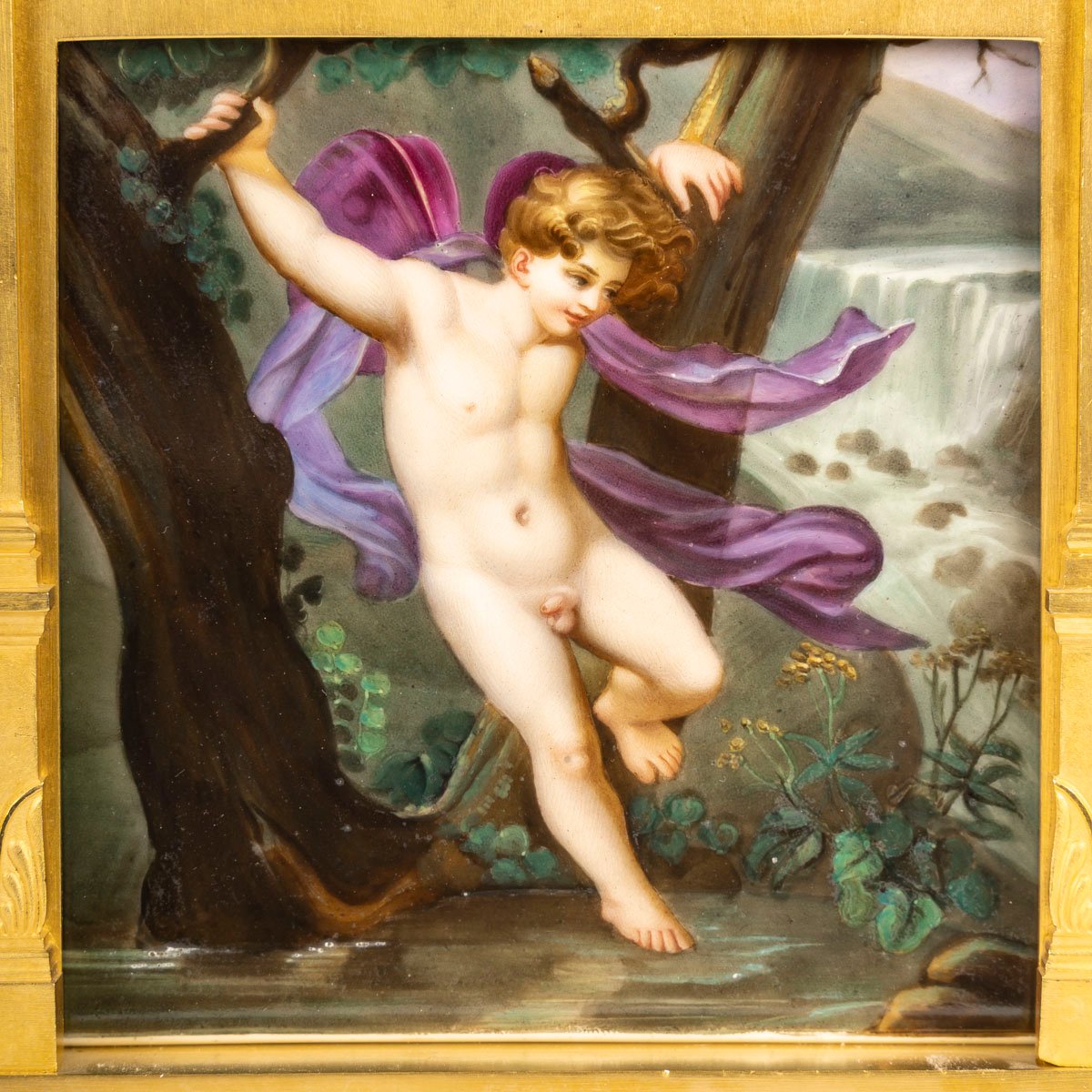
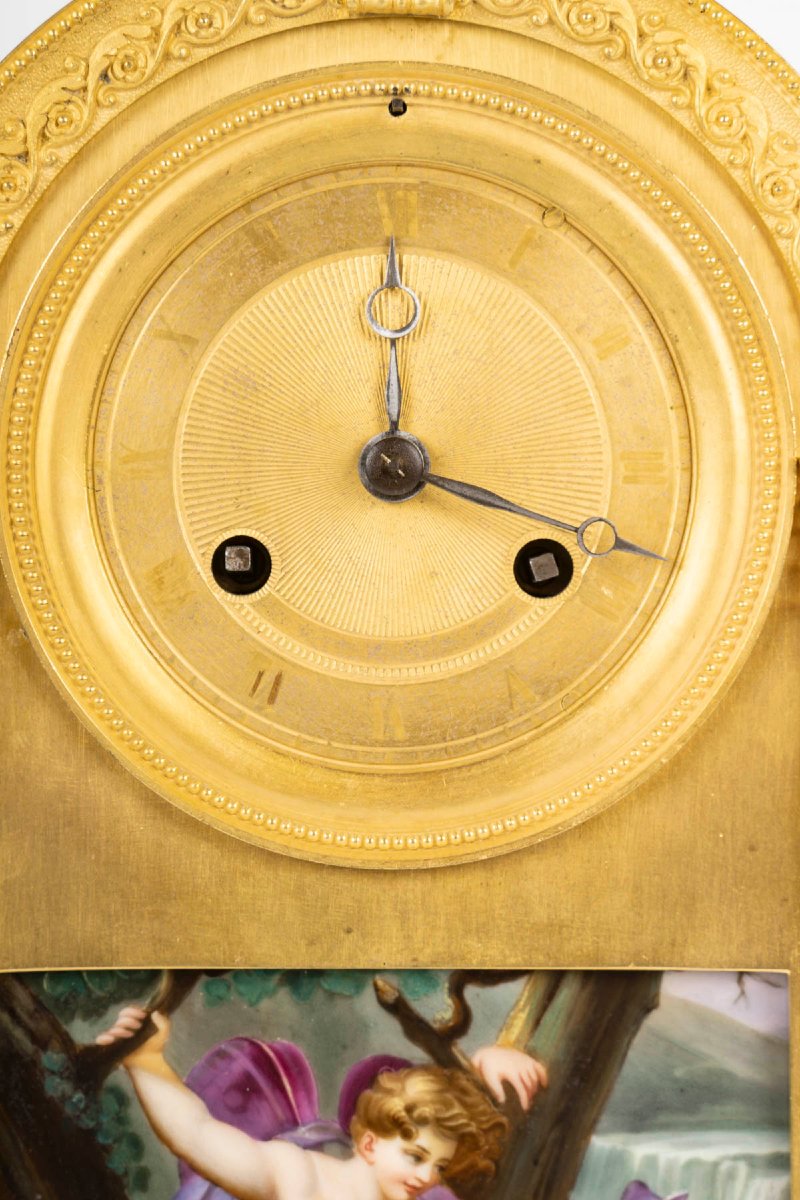
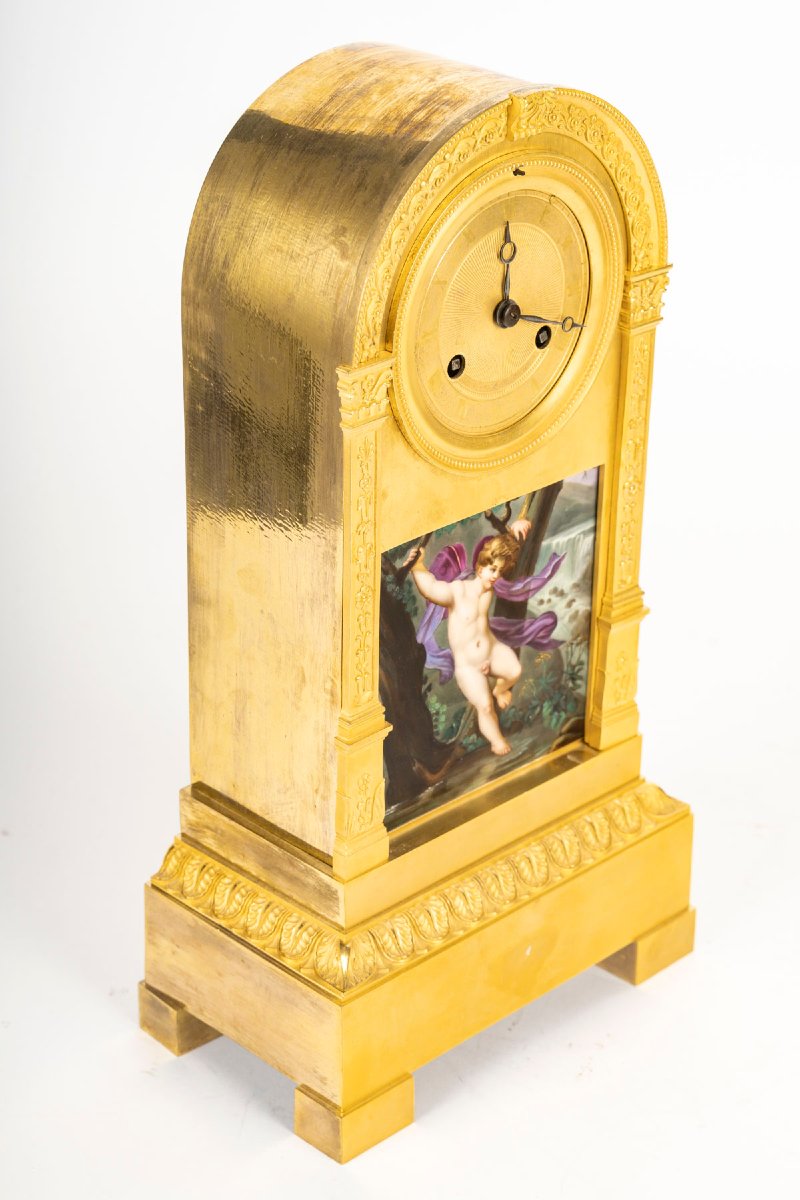
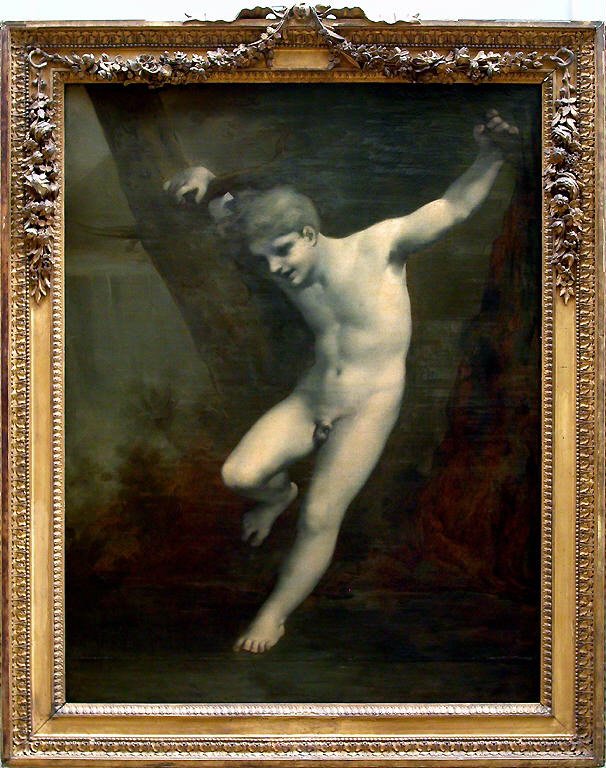
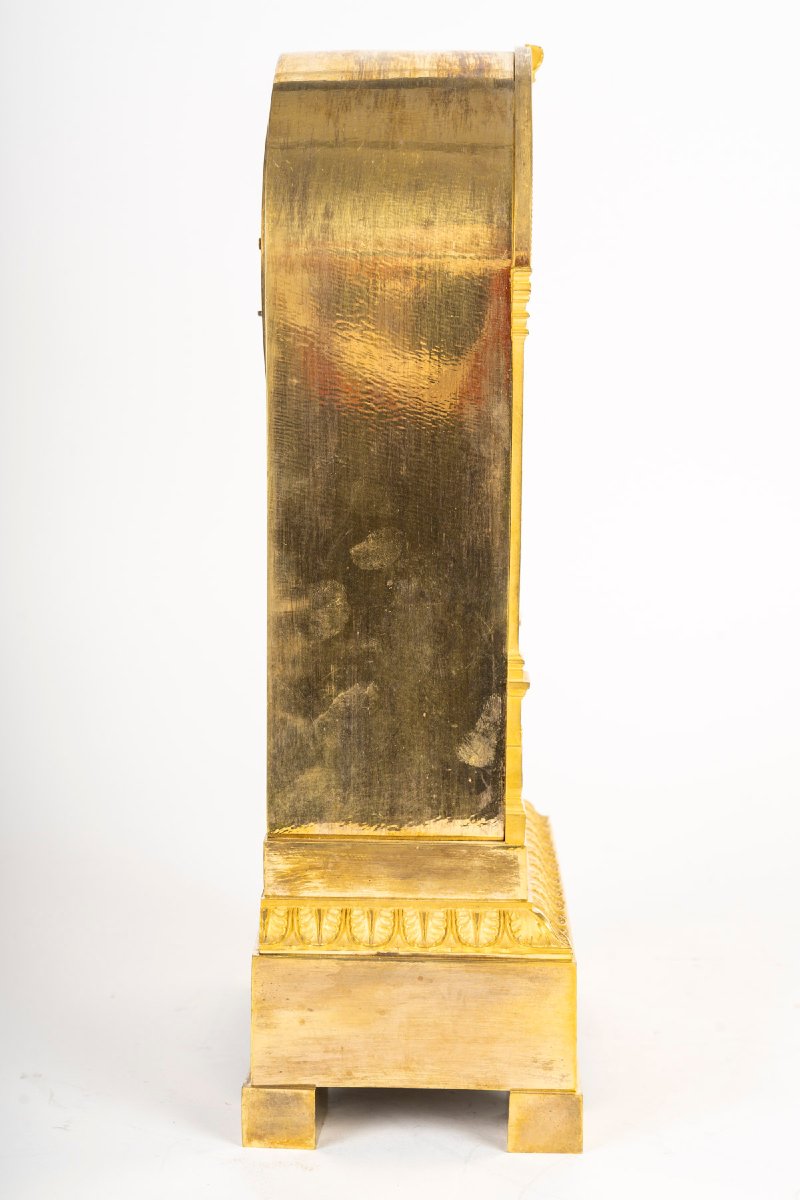

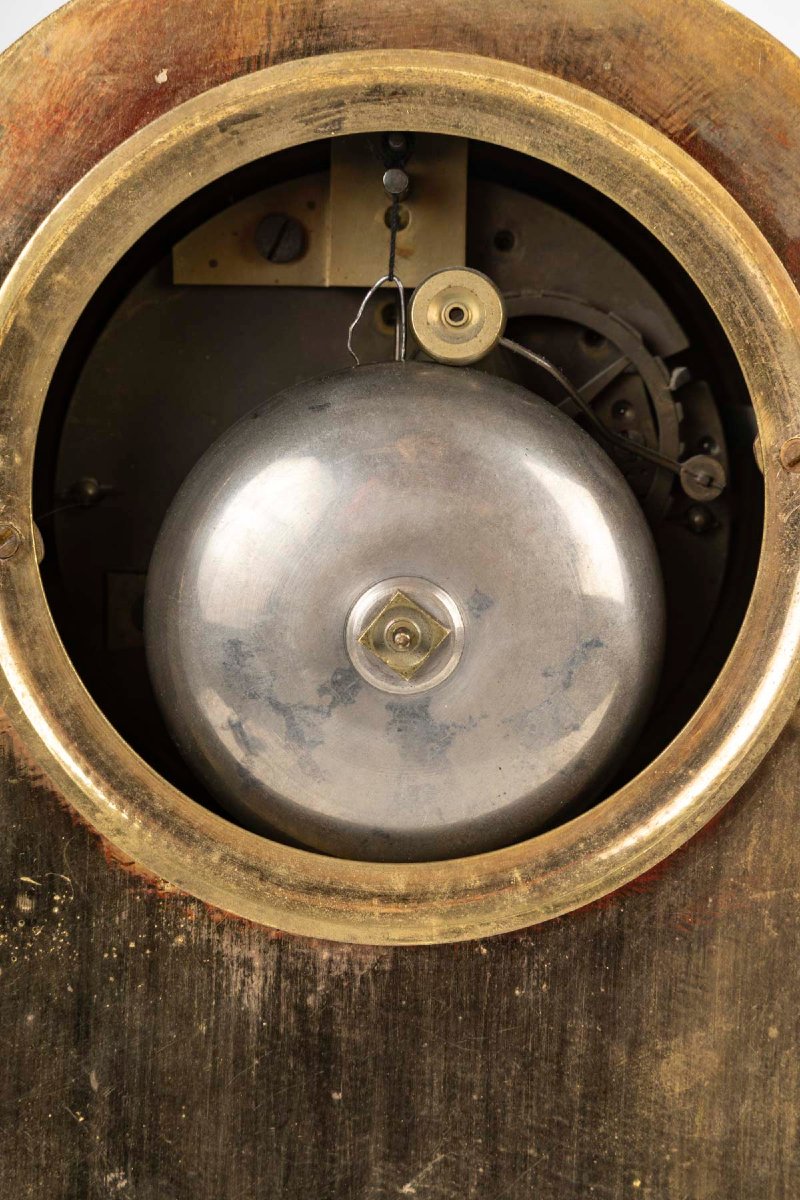
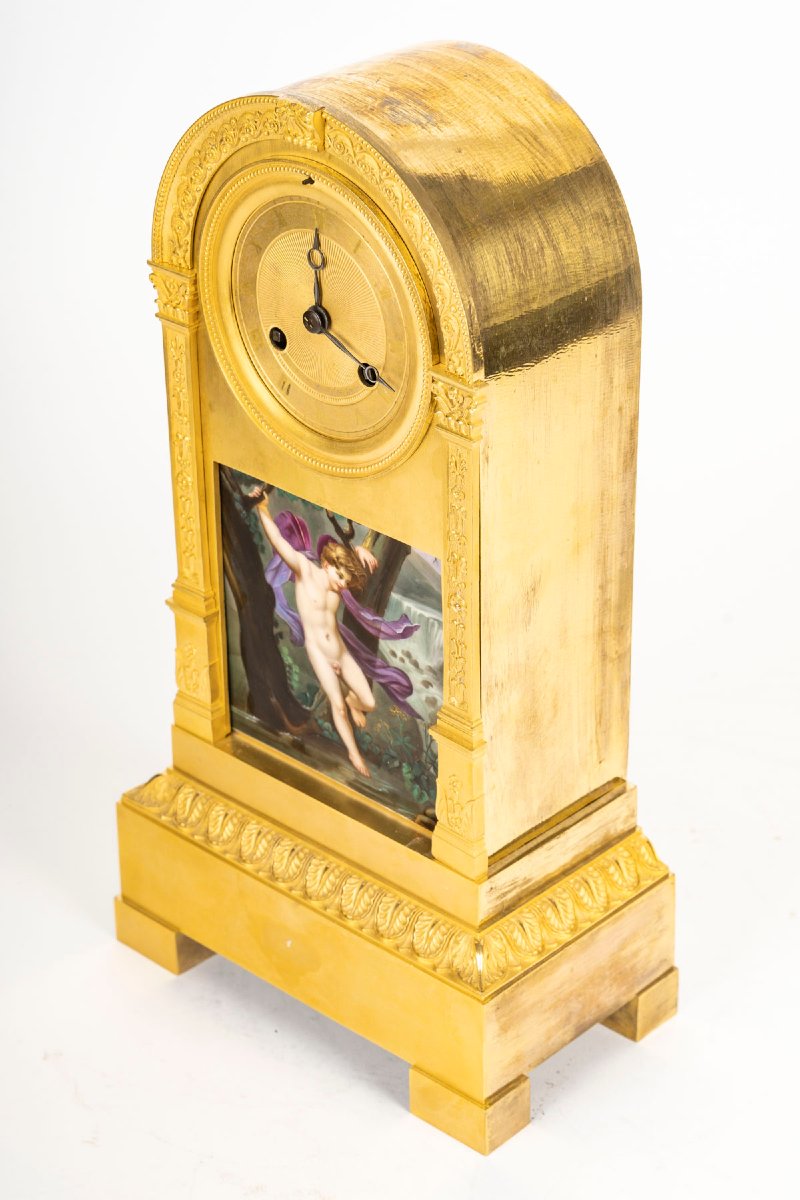










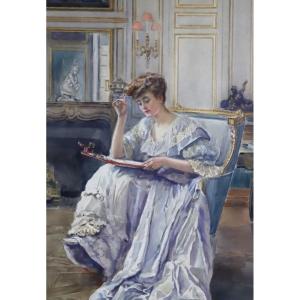

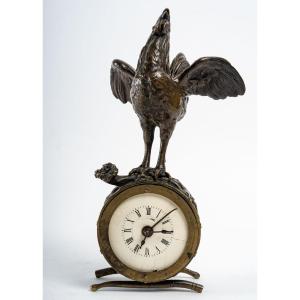
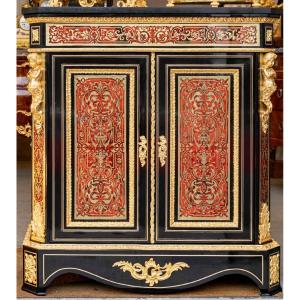

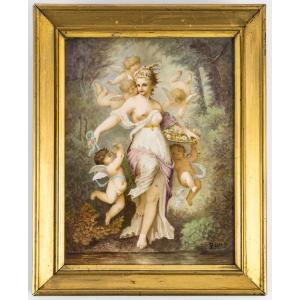
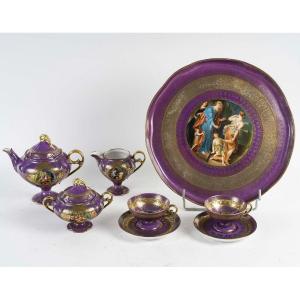

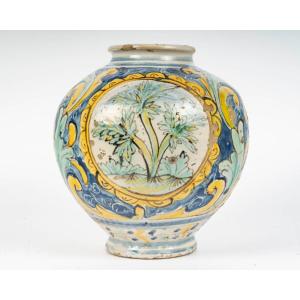


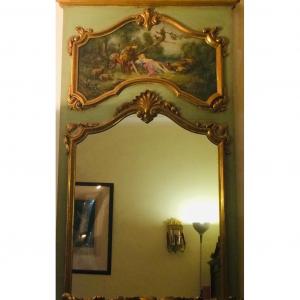
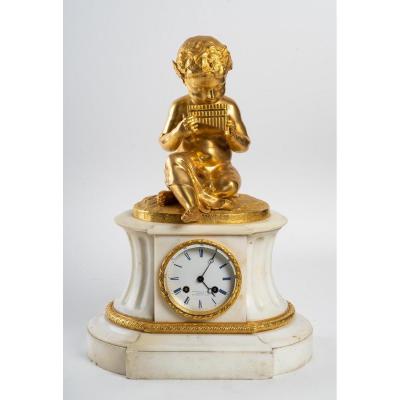









 Le Magazine de PROANTIC
Le Magazine de PROANTIC TRÉSORS Magazine
TRÉSORS Magazine Rivista Artiquariato
Rivista Artiquariato